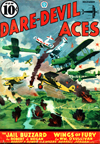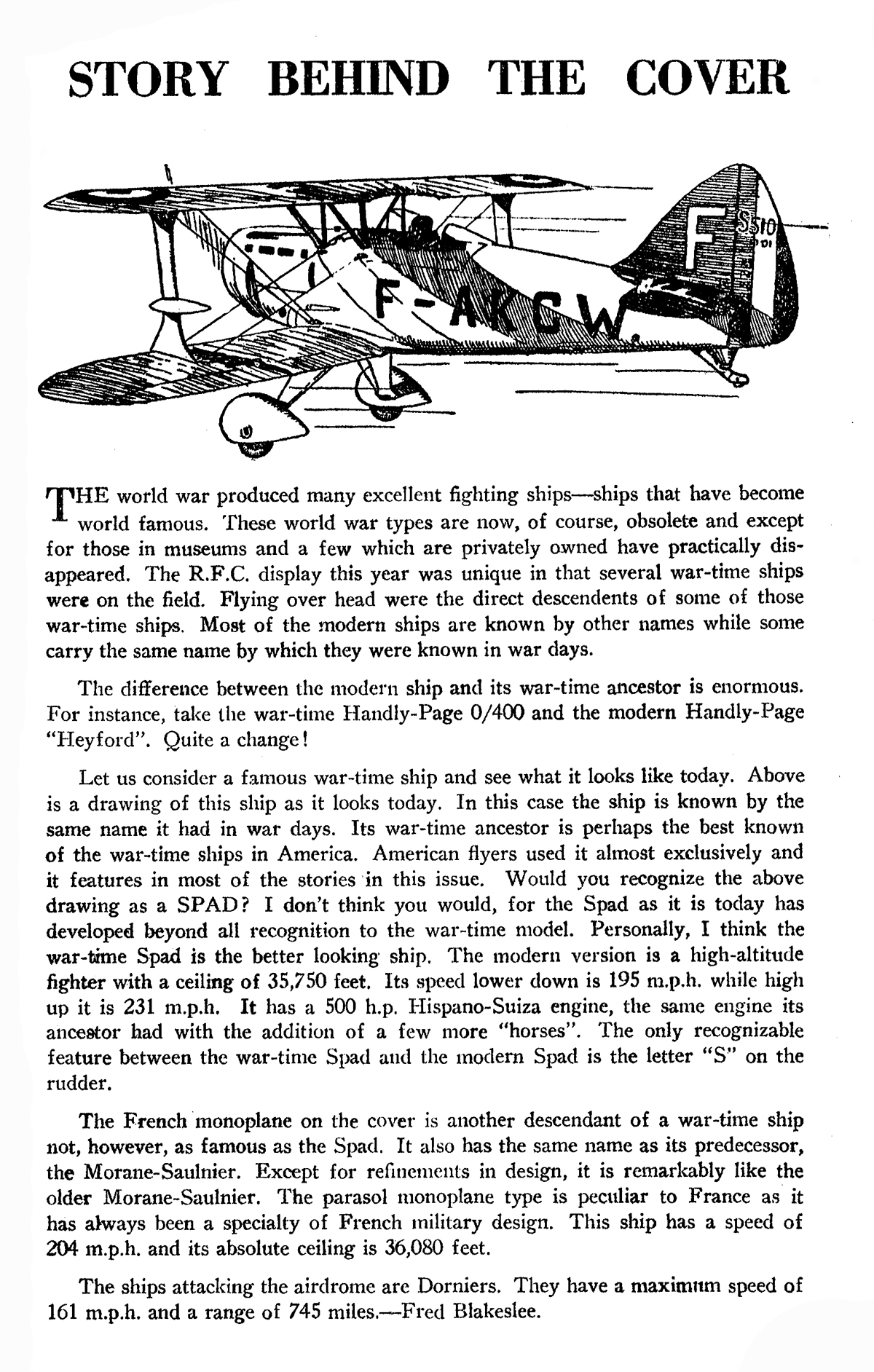“The Heyford” by Frederick Blakeslee
Frederick Blakeslee painted all the covers for the entire run of Dare-Devil Aces. And each of those covers had a story behind it. On Dare-Devil Aces’ December 1936 cover, Mr. Blakeslee gives the modern take on a couple of old classics—the Handly-Page Heyford and the french Morane-Saulnier!
 THE world war produced many excellent fighting ships—ships that have become world famous. These world war types are now, of course, obsolete and except for those in museums and a few which are privately owned have practically disappeared. The R.F.C. display this year was unique in that several war-time ships were on the field. Flying over head were the direct descendants of some of those war-time ships. Most of the modern ships are known by other names while some carry the same name by which they were known in war days.
THE world war produced many excellent fighting ships—ships that have become world famous. These world war types are now, of course, obsolete and except for those in museums and a few which are privately owned have practically disappeared. The R.F.C. display this year was unique in that several war-time ships were on the field. Flying over head were the direct descendants of some of those war-time ships. Most of the modern ships are known by other names while some carry the same name by which they were known in war days.
The difference between the modern ship and its war-time ancestor is enormous. For instance, take the war-time Handly-Page 0/400 and the modern Handly-Page “Heyford”. Quite a change!
Let us consider a famous war-time ship and see what it looks like today. Above is a drawing of this ship as it looks today. In this case the ship is known by the same name it had in war days. Its war-time ancestor is perhaps the best known of the war-time ships in America. American flyers used it almost exclusively and it features in most of the stories in this issue. Would you recognize the above drawing as a SPAD? I don’t think you would, for the Spad as it is today has developed beyond all recognition to the war-time model. Personally, I think the war-time Spad is the better looking ship. The modern version is a high-altitude fighter with a ceiling of 35,750 feet. Its speed lower down is 195 m.p.h. while high up it is 231 m.p.h. It has a 500 h.p. Hispano-Suiza engine, the same engine its ancestor had with the addition of a few more “horses”. The only recognizable feature between the war-time Spad and the modern Spad is the letter “S” on the rudder.
The French monoplane on the cover is another descendant of a war-time ship not, however, as famous as the Spad, It also has the same name as its predecessor, the Morane-Saulnier. Except for refinements in design, it is remarkably like the older Morane-Saulnier. The parasol monoplane type is peculiar to France as it has always been a specialty of French military design. This ship has a speed of 204 m.p.h. and its absolute ceiling is 36,080 feet.
The ships attacking the airdrome are Dorniers. They have a maximum speed of 161 m.p.h. and a range of 745 miles.
Fred Blakeslee

“The Heyford: The Story Behind The Cover” by Frederick Blakeslee
(December 1936, Dare-Devil Aces)




